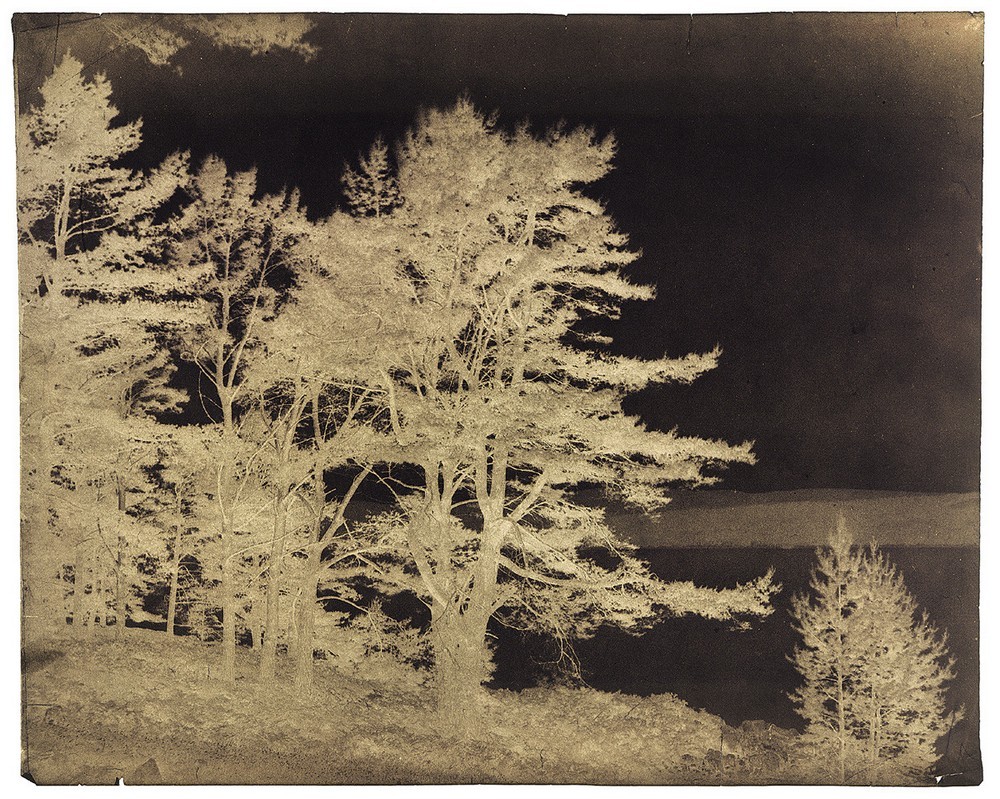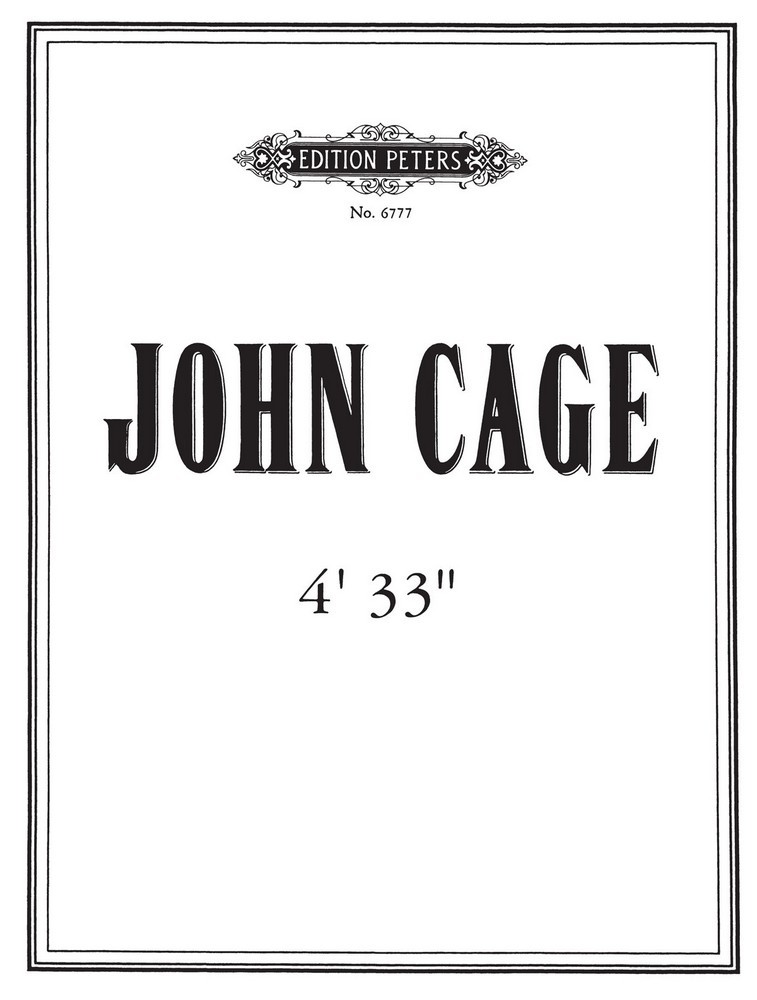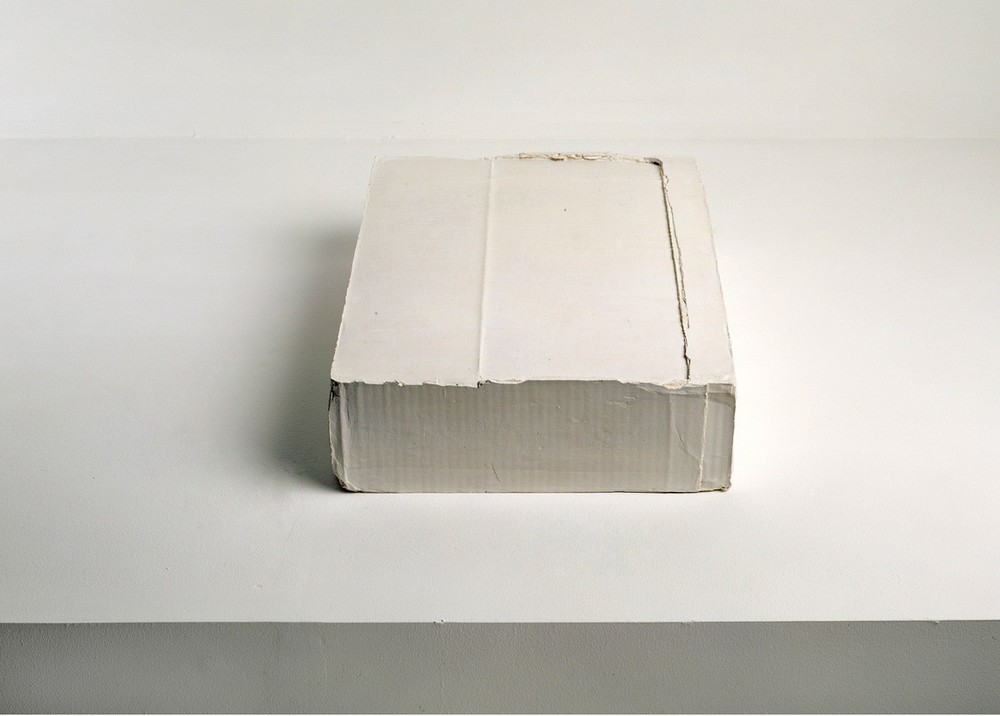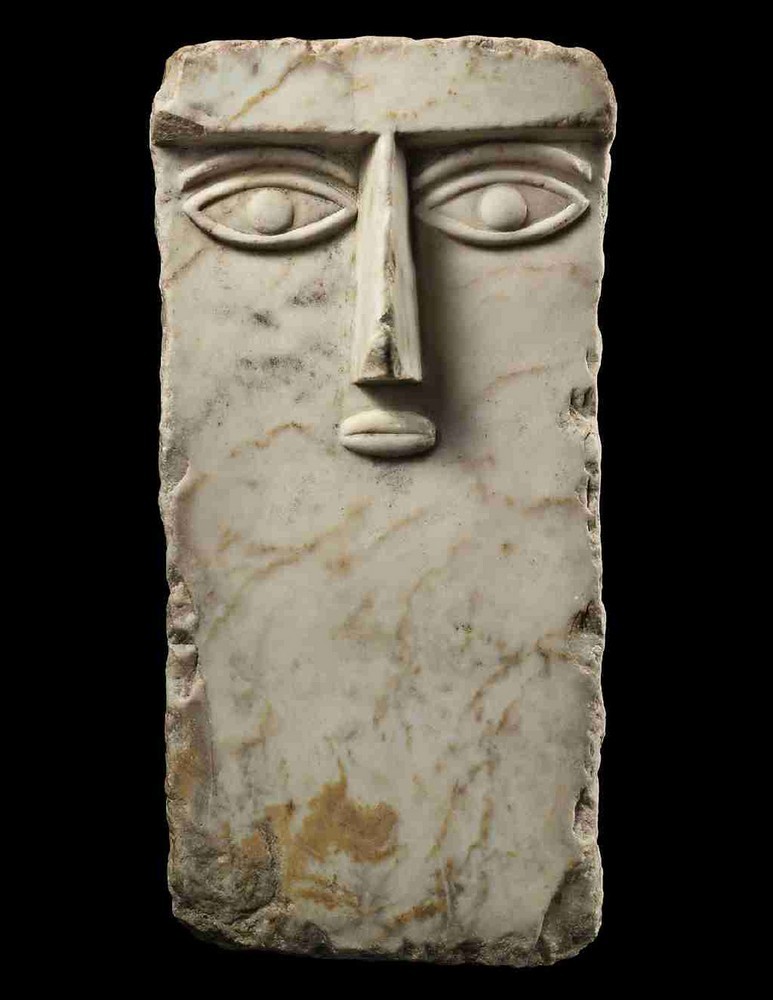Edmund de Waal
white
26 Sep 2015 - 03 Jan 2016

Attributed to Sawaki Rizo Masatoshi
The Hare with Amber Eyes, c.1880.
Ivory netsuke of a hare with raised forepaw. Eyes inlaid in amber coloured buffalo horn. Signed Masatoshi.. 37 cm. Osaka, Japan, c.1880 3.7 cm long Collection of Edmund de Waal Photographer: Michael Harvey.
The Hare with Amber Eyes, c.1880.
Ivory netsuke of a hare with raised forepaw. Eyes inlaid in amber coloured buffalo horn. Signed Masatoshi.. 37 cm. Osaka, Japan, c.1880 3.7 cm long Collection of Edmund de Waal Photographer: Michael Harvey.

Garry Fabian Miller
It's Open Clear Light, 2014–15.
Collection of the artist / Courtesy HackelBury Fine Art, London.
It's Open Clear Light, 2014–15.
Collection of the artist / Courtesy HackelBury Fine Art, London.

Horatio Ross (Scottish, 1801-1886),
Fir trees on the banks of Dornoch Firth between Ardgay and Fearn, c.1850.
1850's Waxed paper negative. 27.9 x 35.2 cm. Hans P.Kraus Jr., New York.
Fir trees on the banks of Dornoch Firth between Ardgay and Fearn, c.1850.
1850's Waxed paper negative. 27.9 x 35.2 cm. Hans P.Kraus Jr., New York.

John Cage
4’33” Manuscript.
Collection of Edmund De Waal. Henmar Press Inc., New York An Edition Peters Group, Company.
4’33” Manuscript.
Collection of Edmund De Waal. Henmar Press Inc., New York An Edition Peters Group, Company.

after Francesco Laurana (1452-1502)
Bust of a woman, possibly Ippolita Maria Sforza, c.1473.
19th century plaster cast manufactured by Brucciani & Co.. 73.0 x 63.0 x 28.0 cm. Photo: © Royal Academy of Arts, London.
Bust of a woman, possibly Ippolita Maria Sforza, c.1473.
19th century plaster cast manufactured by Brucciani & Co.. 73.0 x 63.0 x 28.0 cm. Photo: © Royal Academy of Arts, London.

Rachel Whiteread
FOLDED, 2004.
Plaster. 10.2 x 29.2 x 38.7 cm. © Rachel Whiteread. Courtesy Gagosian Gallery.
FOLDED, 2004.
Plaster. 10.2 x 29.2 x 38.7 cm. © Rachel Whiteread. Courtesy Gagosian Gallery.

Unknown artist
South Arabian calcite alabaster anthropormorphic stele, C 1st BC/C1st c AD.
60 x 30 cm. Private Collection, UK.
South Arabian calcite alabaster anthropormorphic stele, C 1st BC/C1st c AD.
60 x 30 cm. Private Collection, UK.
EDMUND DE WAAL
white
26 September 2015 — 3 January 2016
This unique project in the RA Library and Print Room is an exploration of the colour white and the impact that white objects have on their surroundings; an interweaving of words and books with sculpture, paintings and photographs.
Artist Edmund de Waal is the best-selling author of The Hare with Amber Eyes and the forthcoming The White Road. He has conceived and curated white, a project which sets objects in dialogue with one another and with the spaces around them.
White is not a neutral colour: it forces other colours to reveal themselves. Its blankness suggests both beginnings and endings, while its purity evokes impossibility and obsession. As a nexus for explorations of abstraction, minimalism and the spiritual, white has had special significance to artists across generations, and has fascinated de Waal himself since he made his first pot as a child.
From classical Greek statuary to a marble lantern by Ai Weiwei, and from Kazimir Malevich’s Suprematist Teapot to porcelain pots by de Waal, diverse artworks united by the colour white await discovery alongside little known parts of the Academy’s own collections, including J.M.W. Turner’s porcelain palette. Interspersed amongst the library’s shelves and cabinets, these unexpected encounters invite a quiet and serendipitous journey of discovery.
white
26 September 2015 — 3 January 2016
This unique project in the RA Library and Print Room is an exploration of the colour white and the impact that white objects have on their surroundings; an interweaving of words and books with sculpture, paintings and photographs.
Artist Edmund de Waal is the best-selling author of The Hare with Amber Eyes and the forthcoming The White Road. He has conceived and curated white, a project which sets objects in dialogue with one another and with the spaces around them.
White is not a neutral colour: it forces other colours to reveal themselves. Its blankness suggests both beginnings and endings, while its purity evokes impossibility and obsession. As a nexus for explorations of abstraction, minimalism and the spiritual, white has had special significance to artists across generations, and has fascinated de Waal himself since he made his first pot as a child.
From classical Greek statuary to a marble lantern by Ai Weiwei, and from Kazimir Malevich’s Suprematist Teapot to porcelain pots by de Waal, diverse artworks united by the colour white await discovery alongside little known parts of the Academy’s own collections, including J.M.W. Turner’s porcelain palette. Interspersed amongst the library’s shelves and cabinets, these unexpected encounters invite a quiet and serendipitous journey of discovery.
